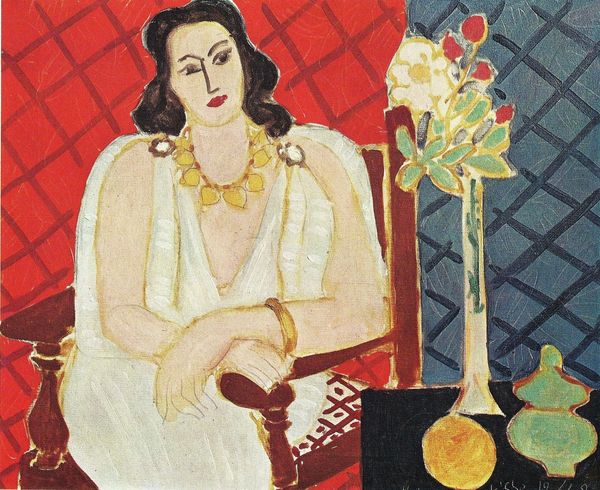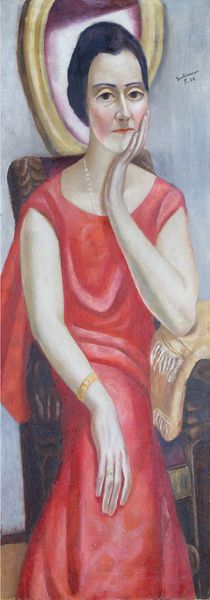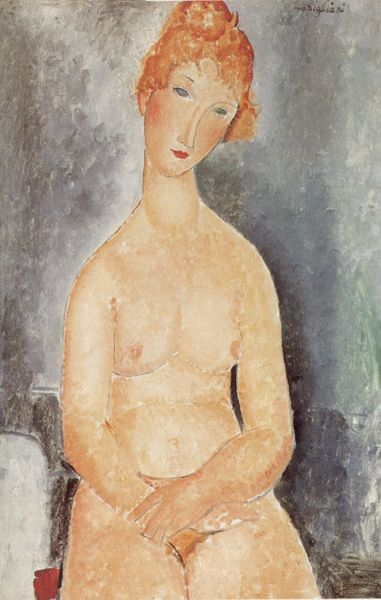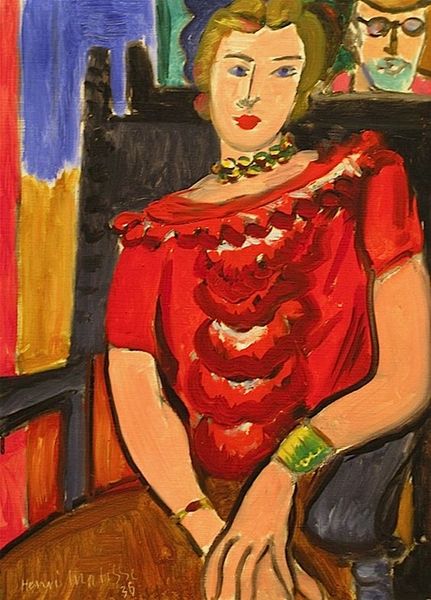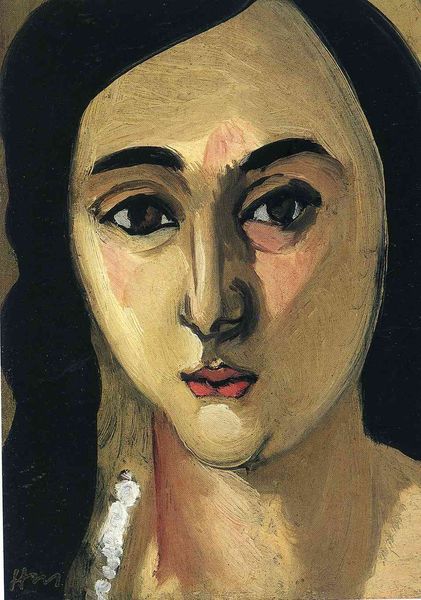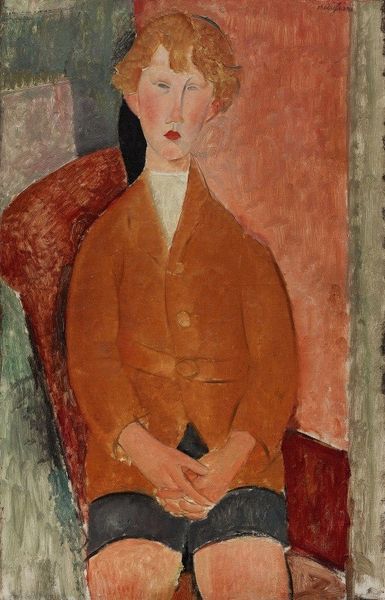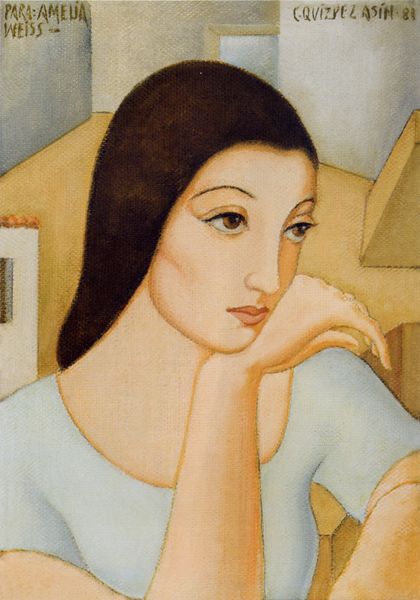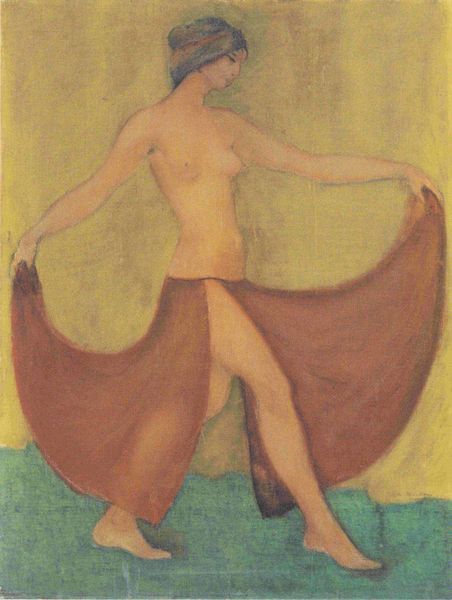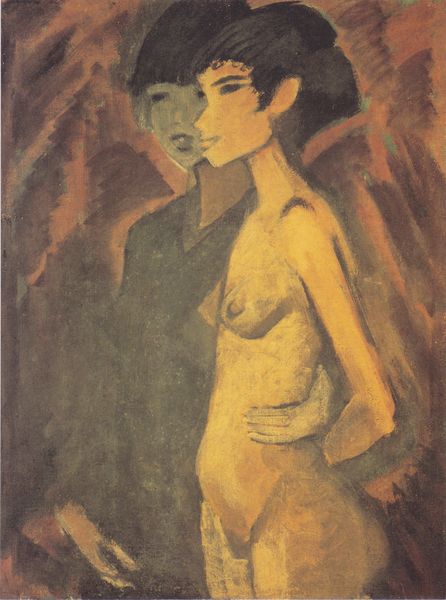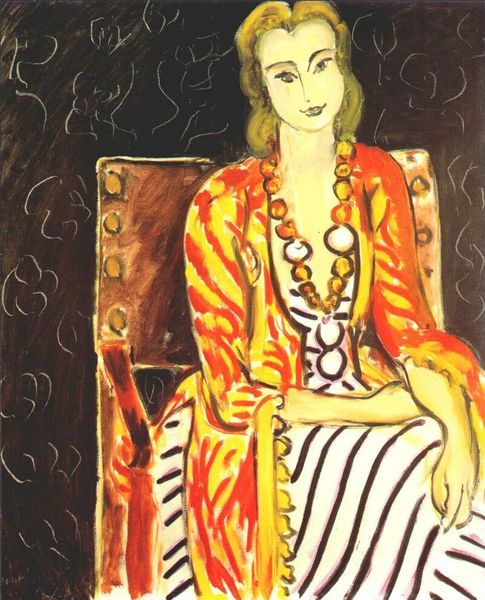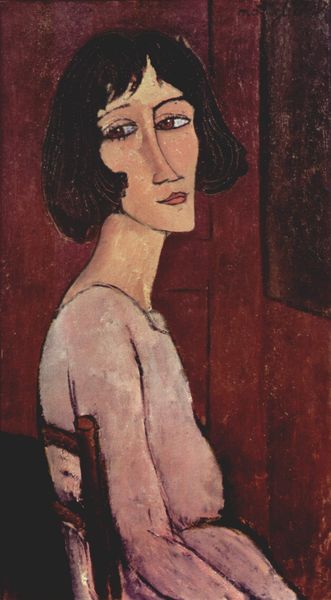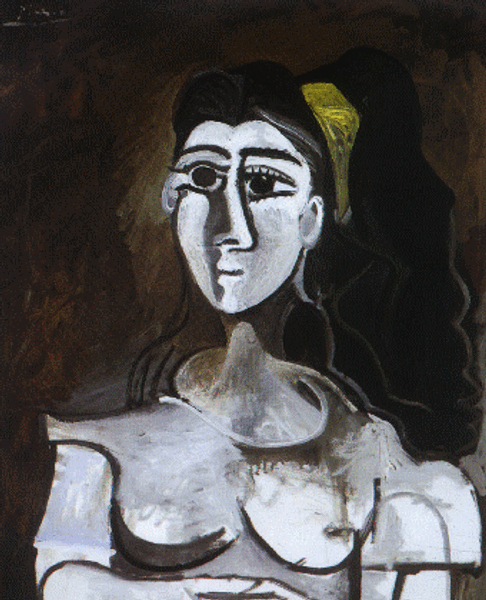
painting, oil-paint
#
portrait
#
painting
#
oil-paint
#
oil painting
#
genre-painting
#
realism
Copyright: Carlos Quizpez Asín,Fair Use
Curator: Alright, let’s talk about this arresting portrait by Carlos Quizpez Asín, called "Cabeza De Gitana" which translates to "Head of a Gypsy Woman," completed in 1934 using oil paint. What strikes you initially about this piece? Editor: The gaze! She's not looking at us. It's that faraway, almost melancholic look. It makes you wonder what she's thinking about, what she sees. The whole earthy palette really contributes to a mood of understated, smoldering drama. Curator: Absolutely. The sideward glance is key, prompting an inquiry into the figure's inner world but let’s dig a little deeper. How might her identity as a "Gypsy Woman"— a term we should interrogate as often romanticized and historically fraught with discrimination—intersect with this representation? Editor: I feel the 'genre painting' style has got a romantic tone of old world travel adventures, like out of an early Hitchcock movie set in Spain. I am struck by how carefully Asin positions his model in the cultural imagination, playing a role as the perceived mysterious other, far away and in search of an adventure. Curator: Precisely, but this isn’t a neutral image. How are elements such as the dark hair, jewelry, and costume working to construct and potentially exoticize this woman within the existing framework? Her expression hints to me about her cultural endurance of the kind described by theorists like Said. Editor: Good point, like layers being peeled away! Perhaps the subdued tones in the composition are playing to the sitter's complex experience with the politics of her day. I was so caught up in the composition, I didn't initially realize the underlying statement about marginalization in the face of history. Curator: Well, I would argue Asín may be playing on an orientalist and exotic trope to create this powerful effect, which speaks to the larger dialogue about the romanticization versus the reality of Romani and other itinerant communities during this era. But I take your point, the careful craftsmanship certainly provides an interesting effect. Editor: Yeah, looking at the picture again, I also can not ignore that she's still looking away, existing somewhat removed, both inside and outside our own time. It's pretty strong! Thanks for revealing its inner nuances! Curator: My pleasure! I learned as well, recognizing those layers helps to not be so taken in by the mood so as to forget what historical circumstances make art speak so strongly to audiences through the ages!
Comments
No comments
Be the first to comment and join the conversation on the ultimate creative platform.
